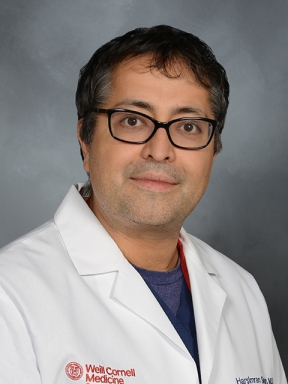Echocardiography
520 East 70th Street, Starr Pavilion, 4th Floor
New York, NY 10021
Our state-of-the-art echocardiography laboratory, accredited under strict IAC standards, is located in beautiful, patient-friendly facilities. We offer the newest technology for a full spectrum of imaging, Doppler, transesophageal, exercise, and dobutamine stress echocardiograms and contrast echocardiograms, with new programs in peripheral arterial imaging and three-dimensional echocardiography.
Echo guidance for mitral valvuloplasty and selected electrophysiological procedures, including use of intracardiac ultrasound, is provided as needed. Online, two-way videocables connect the cardiothoracic operating rooms and the echocardiography review room.
The laboratory has particular expertise in a number of areas including:
•The Marfan syndrome
•Valvular heart disease
•Cardiac disease in pregnancy
•Cardiac disease in stroke
•Cardiac disease in diabetes
•Adult congenital heart disease
All studies undergo meticulous assessment of the size and function of the heart and aorta, following standards established by our world-class research and contributions to international guidelines. Our detailed reports provide referring physicians and their patients with a comprehensive assessment of cardiac chamber size and remodeling; valvular and adult congenital heart disease; and systolic and diastolic function.
Our echocardiography laboratory is one of the busiest in the nation performing over 20,000 studies a year, which include over 1,000 transesophageal echocardiograms and over 500 stress echocardiograms. Our faculty members are leading experts in the field and have been involved in numerous clinical research studies. They also teach a structured curriculum for our cardiology fellows, including a series of didactic lectures and intensive "hands-on" training in the performance and interpretation of echocardiograms.
What is the purpose or benefit of an echocardiogram?
An echocardiogram is a safe, non-invasive diagnostic test that uses high-frequency sound waves (not detectable by the human ear) to produce images of the heart and its vessels. An echocardiogram, a type of ultrasound test, allows doctors to take pictures of your heart and see its chambers as they move and pump blood.
This test is used to assess both the structure and the function of your heart. It can be used to detect many types of heart disease and can also track the effectiveness of various medications and treatments.
Types of echocardiograms:
Transthoracic echocardiogram (TTE)
This is the most common type. Views of the heart are obtained by moving the transducer to different locations on your chest or abdominal wall.
3-Dimensional echocardiograms
This state-of-the-art test employs ultrasound in combination with sophisticated electronics to provide a 3-dimensional view of the heart. This enhanced image is useful in assessing the size of cardiac chambers and the movement of walls within the heart
2-Dimensional echocardiograms
By providing information on the size, shape and movement of the heart, this type of echocardiogram can identify problems with the heart’s valves and the pumping ability of its chambers. For example, persons with congestive heart failure have thickened ventricular walls and/or weakened heart contractions
Stress echocardiogram
During this test, an echocardiogram is done both before and after your heart is stressed either by having you exercise or by injecting a medicine that makes your heart beat harder and faster. A stress echocardiogram is usually done to find out if you might have decreased blood flow to your heart (coronary artery disease, or CAD).
Doppler echocardiogram
This test is used to look at how blood flows through the heart chambers, heart valves, and blood vessels. The movement of the blood reflects sound waves to a transducer. The ultrasound computer then measures the direction and speed of the blood flowing through your heart and blood vessels. Doppler measurements may be displayed in black and white or in color.
Transesophageal echocardiogram (TEE)
For this test, the probe is passed down the esophagus instead of being moved over the outside of the chest wall. TEE shows clearer pictures of your heart, because the probe is located closer to the heart and because the lungs and bones of the chest wall do not block the sound waves produced by the probe. A sedative and an anesthetic applied to the throat are used to make you comfortable during this test.
Dobutamine stress echocardiograms
This type of echocardiogram is designed for patients for whom an exercise stress test is not an option. In this test, a resting echocardiogram is performed. Then, dobutamine--a drug that causes the heart rate to increase — is introduced into the circulation, followed by a second echocardiogram. The results of these two tests are then compared to determine whether any areas of the heart are not pumping normally.
Tissue Doppler Echocardiogram
This echocardiogram is used to define the contraction pattern of the heart, with special attention to the timing of contraction in different heart walls. This technology is useful in identifying patients who would benefit from cardiac resynchronization therapy (biventricular pacing).
Request an Appointment
To schedule an appointment please call: 646-962-4733
Please have your referring physician complete the Cardiac Echocardiography Lab Order Form.pdf











